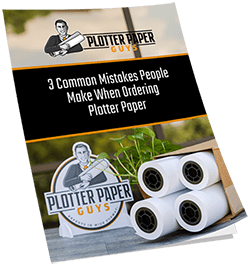Do you work as an engineer, or maybe you’re training as one?
So when was the last time you tried to acquire wide format vellum or engineering vellum? You probably know it’s not always easy to find the right type of paper for your printing needs.
It can be difficult to keep track of every single sheet that you have in your office, especially if you have a lot of different types and colors. Take some time out of your day-to-day routine and find out more about what kind of paper is best for your project.
Here’s everything you need to know about engineering vellum.
What Is Vellum?
Vellum is a translucent paper that’s very smooth to the touch. It’s often used for engineering and architectural purposes, as it has a high degree of opacity, making it an excellent choice for plotting. Vellum is also a good choice for printing and photocopying, and there are many types of vellum.
Vellum Types
Vellum is a thin, translucent paper that’s been around for centuries. The word vellum comes from the Latin word “vitulinus”, which translates to mean calfskin.
The first type of vellum used in the United Kingdom was a mysterious parchment once thought to be uterine vellum, though this has only recently been disproven.
Calfskin parchment is also known as super-fine bookbinding paper (Robert Gifford & Son Ltd created it in 1868).
Vellum papers are made from animal skins such as sheep and goat skin that workers stretch over frames to dry. This makes it tauter.
The surface of these skins is then scraped with a sharp blade or sanded down so that it becomes smooth enough for writing on. You can now use vellum to plot your designs.
Vellums can vary in thickness depending on what type it is made out of and how many layers were used during manufacturing processes like lamination or coating; however, most vellums range from 0.2 mm (20 gauge) up to 0.4 mm (40 gauge).
Xerographic Vellum
Xerographic vellum is 20 lb translucent paper. It is used for engineering, architectural, and design purposes and is perfect for plotters, wide format printers, and inkjet or laser printers. Xerographic vellum has an acid-free pH of 7 to 9 with a mean weight of 80 g/m2±5%.
Xerographic vellum is recyclable and archival quality.
How to Store Your Vellum Papers
You must store your vellum papers in a dry location. The best way to do this is to keep the papers away from light, heat, and humidity. Use a box or container that won’t be exposed to any of these elements.
If you have several sheets of vellum paper, it may also be helpful to store them neatly in binders or folders so they’re easy to find when you need them.
What is Engineering Vellum Used For?
Engineering vellum is a translucent, acid-free paper that can be used for engineering drawings. It’s different from architectural papers which are used for drawings of houses.
It is strong enough to be rolled into scrolls and stored for long periods without losing its quality or integrity. It also has many other uses as well:
- As an alternative to glass in art frames that need to display artwork in a gallery setting
- Underlay for maps and prints (see below)
- As the backing for posters (some people prefer it over the traditional backing of cardboard)
If you’re an engineer, either in-house or you’ve set up a business aiming to engineer new technology, getting hold of engineering vellum is a must.
How to Read Tape Measurements To Preserve Your Engineering Vellum
The key to treating vellum correctly is knowing the size and shape of it down to the smallest millimeter.
To do that you need to use a tape measure. It consists of two pieces—the tape itself and a reel (a spool) on which it winds up. The reel can be located at either end of the tape, but they typically come equipped with reels on both ends so that you can extend both ends simultaneously.
Reels are marked with measurements in inches, feet, and yards; millimeters; centimeters or meters—or sometimes even in fractions of an inch (like 3/4). You may find yourself using imperial units (feet and inches) or metric ones for engineering work, depending on your employer’s preferences.
Read the Numbers in the Feet Column
The numbers printed along the foot column are measured in feet, and you read them by looking at how many feet marks there are between zero and the number that matches your measurement.
For instance, if your measurement is five feet and seven inches, you count up to five on the foot marks (you can also look at the number 5), then add seven more inches to get your final result—5’7″.
20lb Xerographic Paper
If you’re looking for a weight of paper that is a bit lighter than 60# and heavier than something like an 18# translucent bond, 20lb vellum xerographic paper might be a good option. This weight is frequently called “standard”. It can accommodate any inkjet or xerographic printer, making it ideal for engineering, architectural, and design purposes (send us a message with your printer type and we can recommend the inkjet or xerographic vellum).
20 lb vellum is also an excellent option if you’re working on a project that requires translucent paper. This weight of paper is available in sizes as large as E Size (34” x 44”) and comes in rolls of up to 500 feet.
Xerographic Vellum Paper Works With Any Inkjet or Laser Printer
Xerographic Vellum paper is a 20lb translucent paper that works with any inkjet or xerographic printer. Use it for your engineering, architectural, and design purposes. It is a good choice for plots and plans, blueprints, maps, and drawings.
Hopefully, this guide has been helpful for you. Vellum paper can be tricky to work with, but now you have all the information you need to start using it in your own projects.
If you have any more questions about engineering vellum rolls or any other product, feel free to contact us today.




